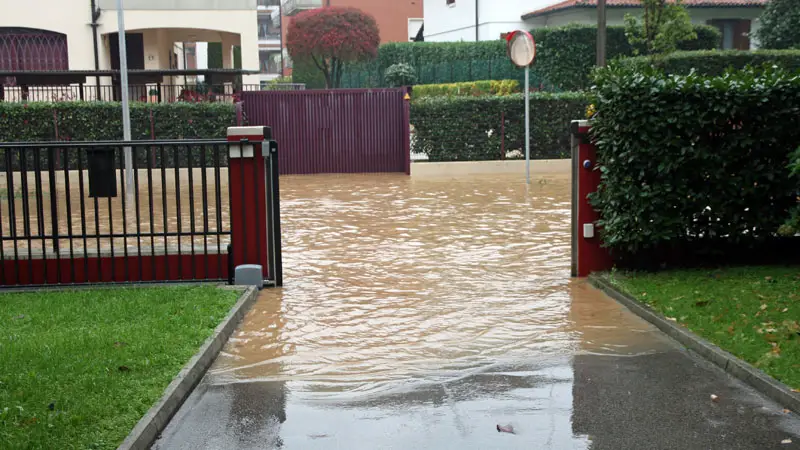Flooding isn’t just an occasional threat; for some parts of the world, it’s a way of life. There are quite a few different kinds of flood, but they can be categorized into five basic types.
Knowing the difference between the different types of floods means you’ll know the cause and severity automatically.
Types of Floods
1. Areal Floods
This type of flood is very common in flatter areas where the water table is shallow. Areal floods result when there’s so much rainfall or melting snow that the surface soil is unable to absorb any more.
Solid concrete or rock, as well a frozen ground, can also prevent water from soaking into the ground. In some cases, the amount of water reaches dangerous depths.
Countries which have rainy seasons often suffer from this kind of flood, either because the ground has become too packed from drought conditions to absorb the water or because storms occur with so much frequency the land doesn’t have time to drain.
2. Catastrophic Floods
As the name implies, this is when a sudden change in the environment or infrastructure results in major flooding. This may be something as simple as a dam breaking. However, they’re more often caused by earthquakes, landslides, or volcanic eruptions.
These events can change the shape of the land in mere moments, shifting waterways or blocking them entirely. As a result, these floods can often come suddenly with deadly force.
Of course, the best known and most feared form of catastrophic flood is the tsunami. Caused by undersea earthquakes and often only predicted by observing coastal wildlife, the water recedes from the coast, leaving large portions of underwater shoreline exposed.
This then suddenly reverses with a massive wave overtaking the coast and destroying everything in its path. Because they can be difficult to predict, it’s very rare for a tsunami to occur without numerous casualties.
3. Coastal (Estuarine) Floods
Caused mainly by low barometric -pressure or high winds from one direction or channel floods from the other, coastal floods can be the result of tropical storms, cyclones, or even a secondary flooding following a tsunami. In cases of flooding inland, the floods are often created by massive waves.
Flooding towards the coast tend to be the result of flash floods, with debris often tearing into the river banks as the waters rush to the coast. In either event, the energy from coastal floods destroy everything in their paths, resulting in millions of dollars in property damage every year.
Bangladesh is a nation notorious for coastal flooding. The nation is a giant river delta where major rivers meet and is mostly on a low floodplain. Every year during the monsoon season, cyclones crash into the nation from the Indian ocean and inundate 2/3 of the country.
Its people have adapted and build structures that resist flooding, but there are still many deaths and great damage every year from the coastal flooding.
See Also: 13 Terrain Types on Earth
4. Riverine Floods
More commonly known as channel floods, this is the kind of flooding you likely think of first. They can result from a wide range of causes, such as excessive rainfall, sudden storms, rapid melting of snow and ice, glacial melting, landslides, or cyclones.
What they all have in common, however, is that stream and river channels take on a sudden influx of water far larger than they can contain. The water level rises quickly and usually turns muddy due to the amount of sediment being washed away. Dry areas with deep but narrow rivers are prone to flooding, but even wetter climates aren’t immune.
Riverine floods pose several dangers. Not only can flash floods rapidly overtake low-lying roads and residential areas, but the sudden rush of water is enough to rip loose land, trees, and anything else along the riverbanks. Due to the speed of the water, it’s easy for people to get swept up and drown.
Additionally, trees and other large debris can slam into bridges, boats, and other structures, causing extensive damage. It can be catastrophic to those in farming and agriculture. After a flash flood has ended, it can take many days for the water levels to return to normal, disrupting life and often isolating homes along creek beds.
5. Urban Flooding
Caused by flash floods, excessive rain, or broken water mains, urban floods are any form of inundation occurring in densely populated areas. Areas with poor drainage and sewage systems are more prone to this sort of flooding.
Because the food waters have a habit of seeping into basements or come into contact with sewage, areas suffering from urban flooding may be required to use bottled water or even evacuate until the flood recedes and cleanup may begin.
In 2005, New Orleans fell victim to extensive urban flooding due to a passing hurricane. The city is built in a location that may be easily flooded, and the resulting flood left the entire population temporarily homeless.
Even after the flood waters were gone, residents couldn’t return to their homes for some time as cleanup crews worked to clear away the sewage and make homes safe to inhabit.
Some families lost their entire home, while the more fortunate had to discard furniture and have the lower floors of their home remodeled to get rid of any sewage-soaked materials.

